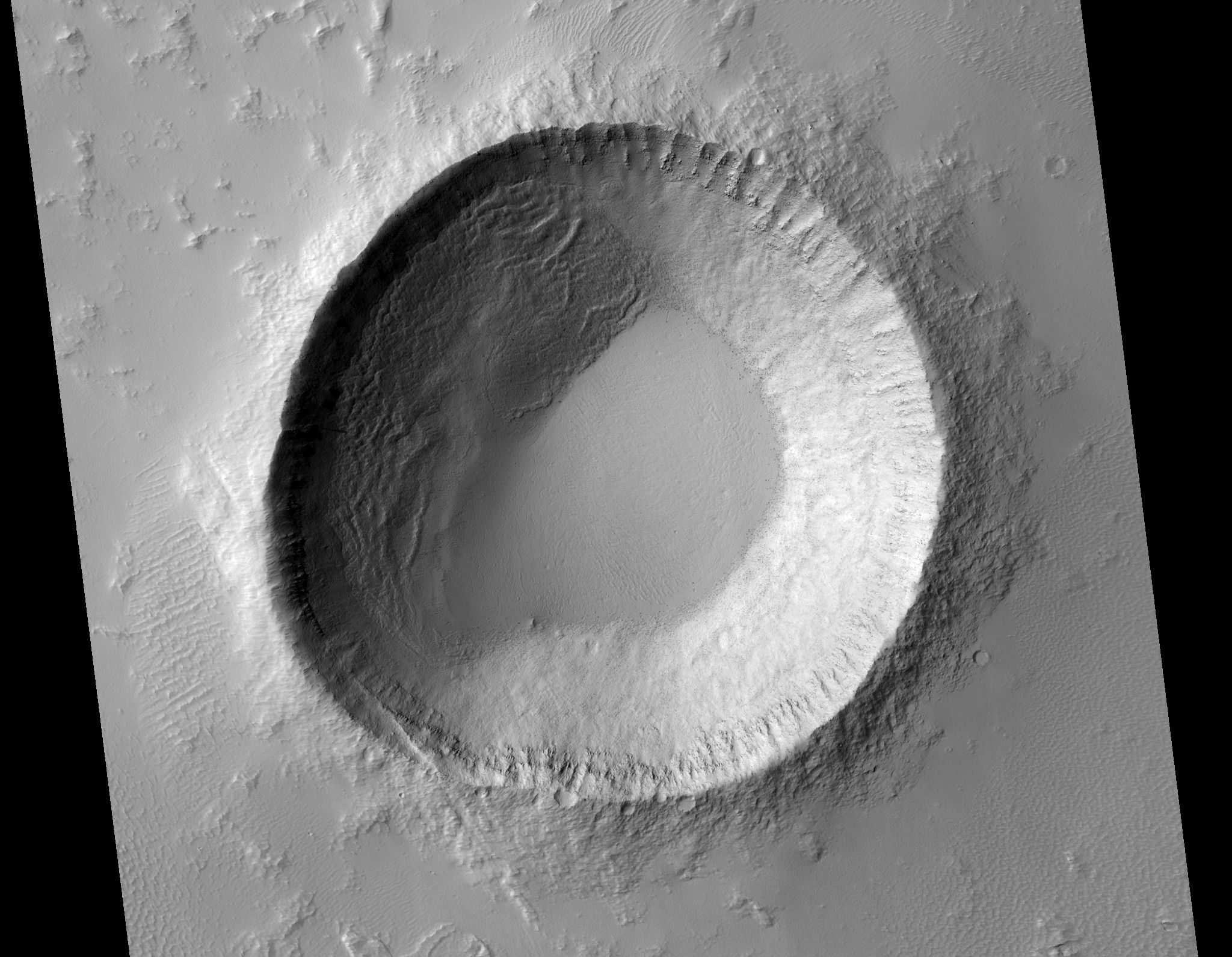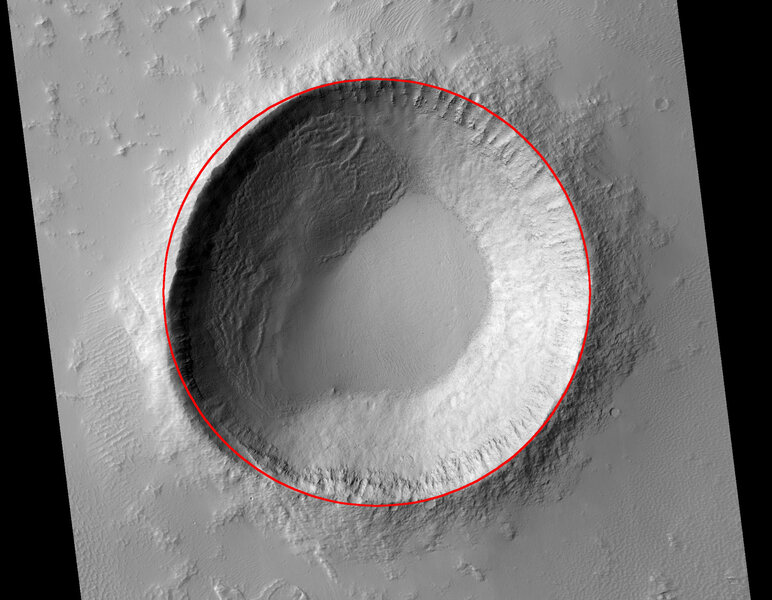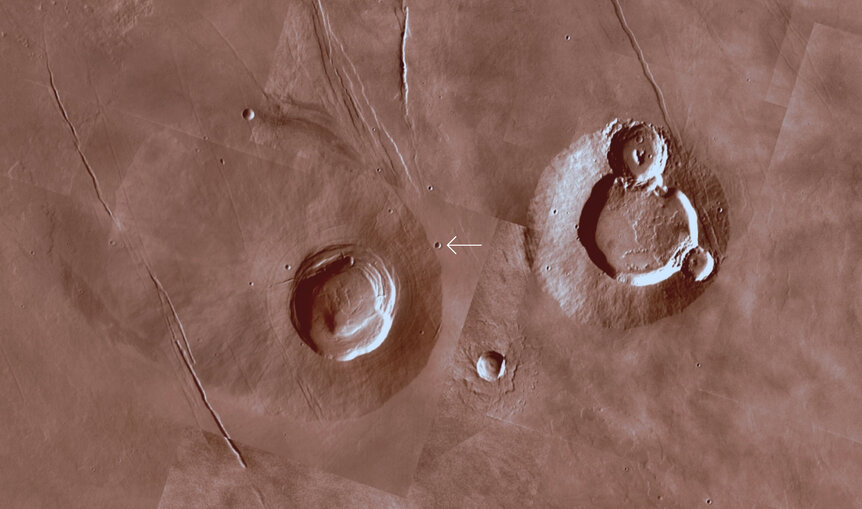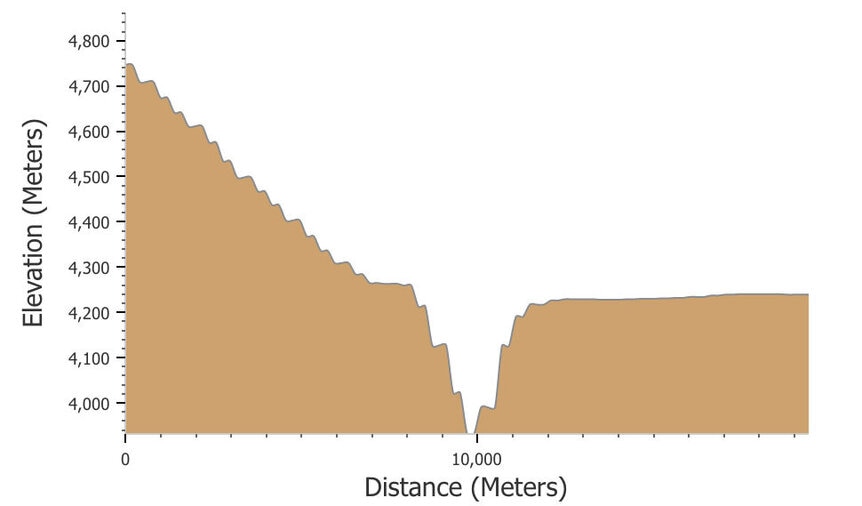Create a free profile to get unlimited access to exclusive videos, sweepstakes, and more!
What flattened this Martian crater?

As a science communicator I get a lot press releases from journals and research institutions touting work done by their scientists. That’s great, and lets me know about work being done in various fields. It can be hard to keep up with interesting science news, and that helps.
I also peruse journals, poke around the web, and basically sniff out stuff that might make for a good blog post.
Social media helps a lot too. I follow a few space missions and observatories, and sometimes they post something that makes my science sense tingle. If so, I start to dig into it and see what’s what.
A great one to follow is HiRISE, the Twitter feed for the High Resolution Imaging Science Experiment camera on the Mars Reconnaissance Orbiter. This camera takes spectacular images of the Martian surface, with resolution as high as half a meter per pixel! The details can be staggeringly beautiful.
On Nov. 30, 2018, the HiRISE feed tweeted this, and I was immediately interested:
As it happens I had just finished writing about a very pretty lunar crater, a nearly perfect circle carved into the Moon’s surface. But even in that small thumbnail I could see this Martian crater was… off.
So I went to the HiRISE page and grabbed a high-resolution image of it (warning: It’s a 90Mb file, and the image is 11,000 x 14,000 pixels). And yeah: It’s off-kilter:
Holy barsoomian impact! What a beauty! For scale, the crater is about 3 kilometers wide.
As you can see, though, it’s wonky. The right (east) side looks fine and circular, but things go off the rails a bit as you circle around to the left (west). The northwest side is significantly flattened, and the inside of the crater wall has that wedge-shaped structure inside it all the way down to the crater floor. The floor itself looks flat, too (though that isn’t uncommon).
To highlight the flattening I drew a circle to roughly align with the rim on the right:
This is where things get really odd. Sometimes, due to erosion, part of the rim of a crater will collapse, and you get a landslide inside the crater… but a rim collapse expands the rim, making it bow outward from the center. You can see that phenomenon a bit to the southwest, where the rim moves out from the overall circular shape. It looks like there’s been some collapse there, too.
So why is the flattened edge pushed inward, then?
That’s hard to answer… but taking a step back and putting this crater in context helps.
I got this from the wonderful Mars Trek site, an interactive atlas. The HiRISE page gave the coordinates of the crater (about 127° west, 2.7° north), so finding it was easy. This image is roughly 420 km across, and the crater is marked it sits between two volcanoes — Biblis Tholis on the left, and Ulysses Tholus on the right. It sits just barely off the edge of the flank of Biblis Tholus, in fact, by only a couple of hundred yards.
Hmmmm. When I replied to the original HiRISE tweet asking about this crater, volcanologist Ian Sanginor jumped in, and we started swapping ideas. He speculated that magma from Biblis pushed outward from the volcano, squishing the crater wall. He also pointed out that the northwest wall is steeper than the other side, which is why the landslide occurred too.
That sounds right. But to my eye the crater looks pretty young (the features are sharp, and there are very few smaller craters inside it, implying relative youth), and those volcanoes are old. My initial guess is that the impact formed the crater after the volcano went dead. Which is it?
Playing with Mars Trek, I found there’s an elevation tool! I took a cut across the crater, making sure I went a few km east and west of it, and got this:
Aha! The surrounding area looks flat, but in fact outside the rim the northwest side is 50–100 meters higher than the east side, then steepens sharply up the volcano’s flank. Could that have to do with why the rim is flattened?
My first guess here was that the impact had to push material uphill, expending energy. That could steepen the wall in that direction and flatten the rim. However, Sanginor pointed out a paper that looked into this very thing on the protoplanet Vesta, which is very lumpy and also covered in craters. I was surprised to see that on Vesta, craters that formed on slopes were sharp and round on the uphill side, while the downslope side was more distorted. That’s the opposite of what we see here! So my guess must be wrong.
It’s possible that there is denser, stiffer material under the surface in the upslope direction, so the energy from the impact had a harder time pushing through. One problem with this is that the volcano is almost due west of the crater, and the deformation is on the northwest.
That brings us back to Sanginor’s initial idea: The asymmetry in the crater rim happened after it formed. So it was originally a circle right after the impact, but then some time later slumping as the volcano settled or magma movement or something pushed down on the crater from the northwest, steepening the wall, flattening the round rim, and causing the landslide. I looked at the landscape around the crater for evidence of past movement, but it’s hard to say. I can see sand dunes rippling around it, but that happens around many craters on Mars where there’s a wind coming from a persistent direction. The surrounding terrain doesn’t seem to be giving up any secrets I can find.
Mind you, Sanginor is an actual volcanologist, while I’m not; nor am I a planetary scientist or a craterologist (if that’s a word). I’m very much an amateur areologist and geologist, with some background in science and a love of this stuff. It’s certainly fun to look over this sort of thing and make some guesses, but I yield to experts when it’s called for. So I have provisionally shifted my position to agree with Sanginor, with the caveat that there’s a still a lot of weird stuff here that needs explaining.
And as Sanginor noted, at some point we’ll just have to go there and look for ourselves. I have a long, long, long list of stuff I’d like a closer look at on Mars. This just got added to it.






























